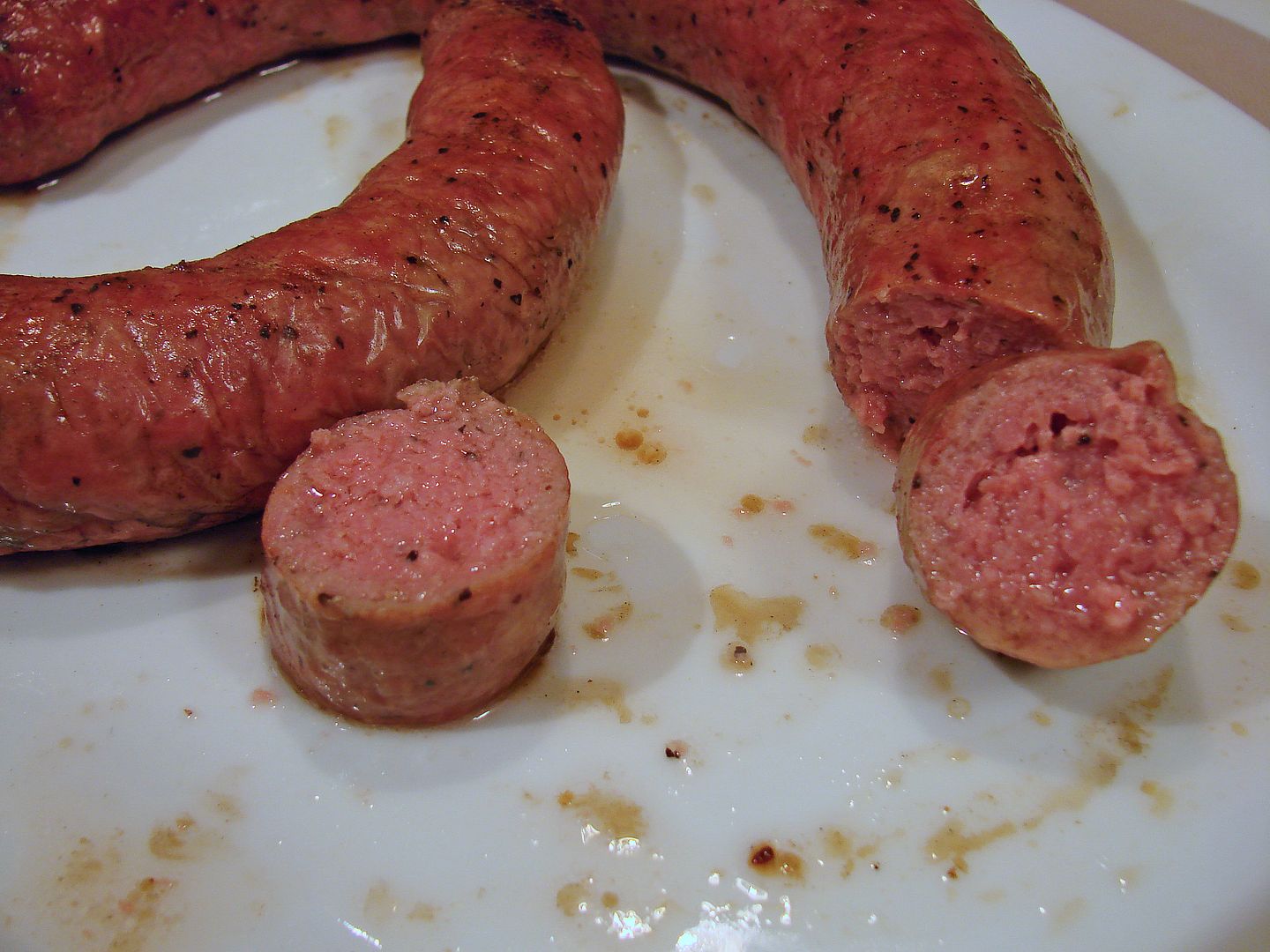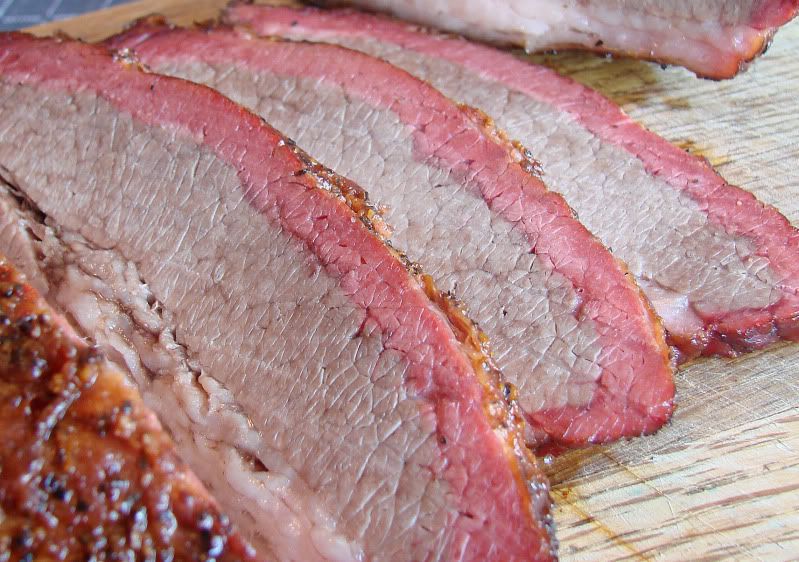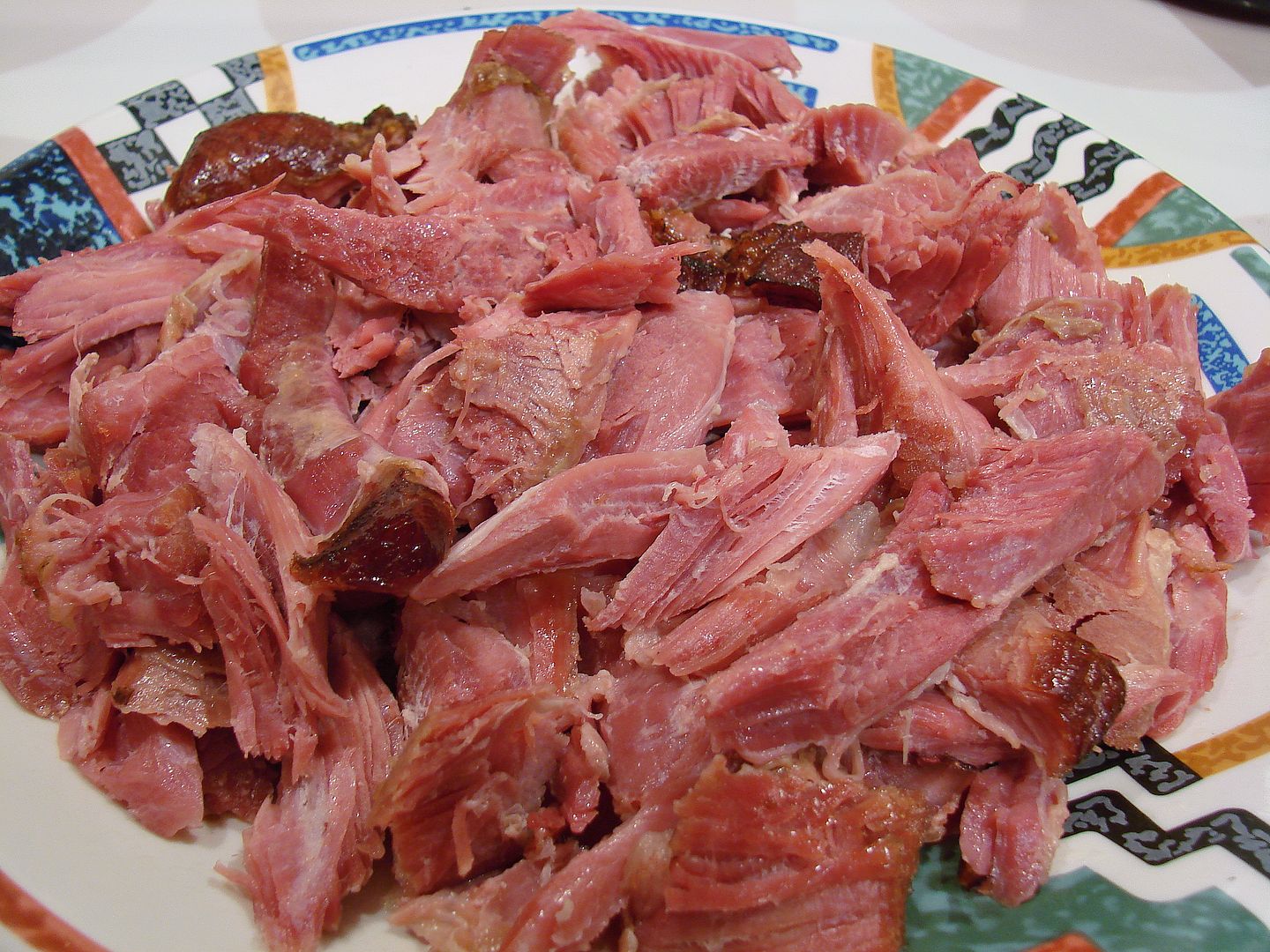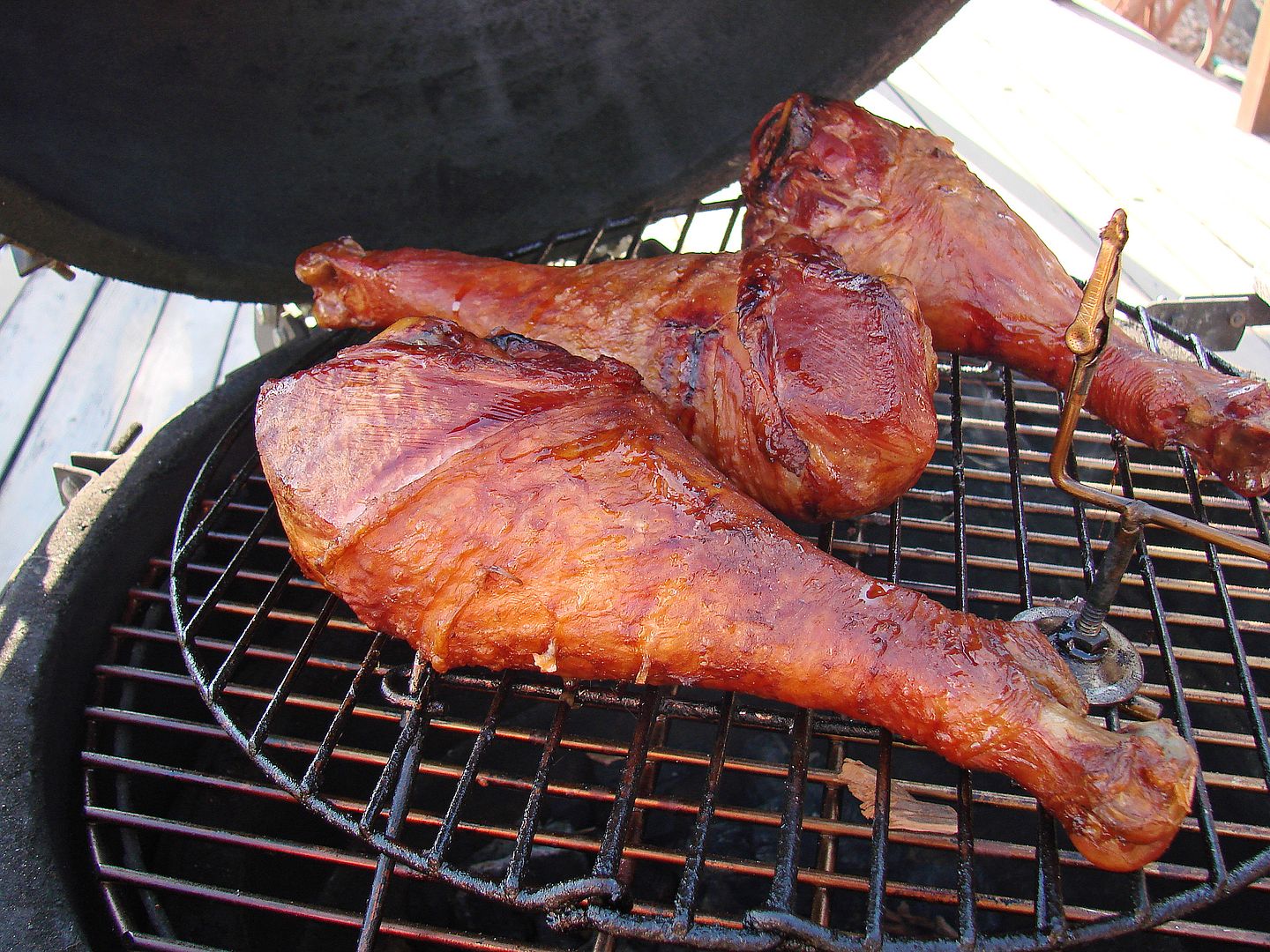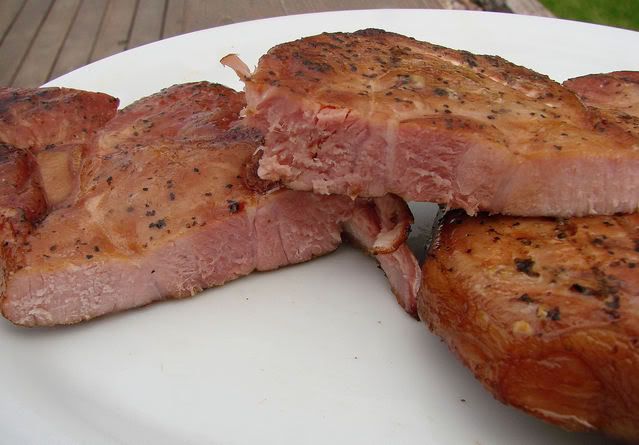TQ does several things. As a curing agent it will improve texture, color and help with moisture retention. It is used for curing things like corned beef, pastrami, buckboard bacon. It can also be used in brines (and dry cures) for preparing meats like fish, jerky sausages, poultry or chops for smoking.
Often times folks use it for safety reasons, like when cold smoking sausage or fish, and other times it is used for visual appeal, like in sausages or when you want to make a smoke ring pop out.
This is a beef/pork sausage with TQ added. It was grilled to 170° but still remains pink and juicy.
These Texas hot links have TQ added, again not for food safety as they are hot smoked, but just for color, moisture and a tighter texture.
Here is a TQ'd brisket.
This is meat from smoked turkey legs which were brined in a liquid that had some TQ in it. Once again, these were hot smoked, so the TQ just added the color and changed the texture to something like ham. I use this meat as a low fat substitute for pulled pork.
Doing a TQ cure on regular chops, then hot smoking them gives you the same smoked chops the meat markets charge big bucks for.
TQ was developed specifically for home use and has only 1% total of nitrates and nitrites, so it's relatively safe to use. The commercial "pink salt" used for curing is 6.25% nitrites.
Not really off his rocker.... think of TQ as nitrates/nitrites in a salt carrier. In this case the salt is around 98% of TQ, the nitrites/nitrates are 1% and some other chemicals make up the other 1%. The big problem is that TQ is really fine, so if you used one teaspoon of it in place of 1 teaspoon of other salts, you would actually be using much more (by weight) so things might taste salty. And of course if you substituted it for salt you would also get the benefit on the nitrate/nitrites in it, which you might not want in all cases.





